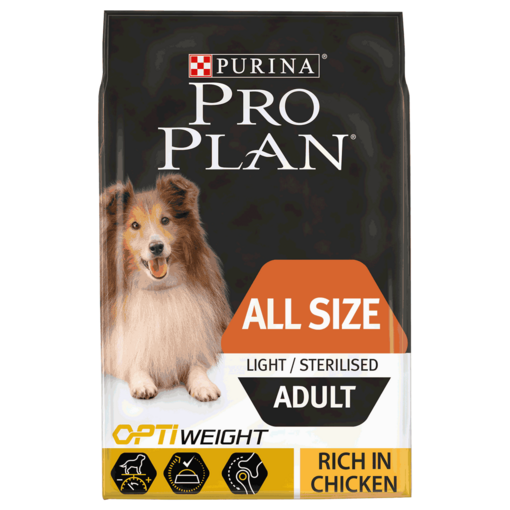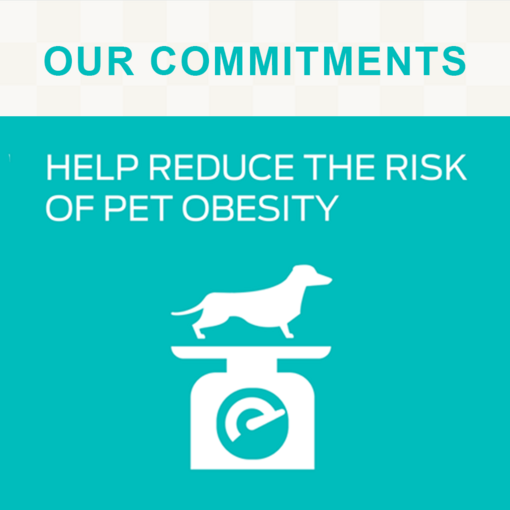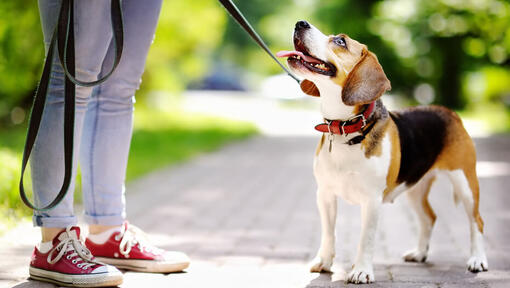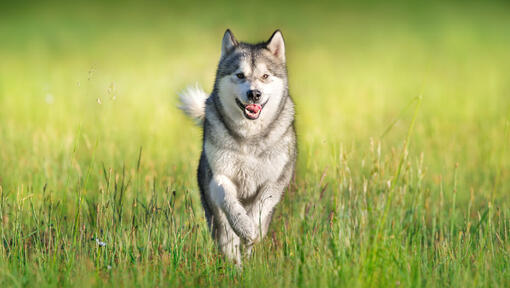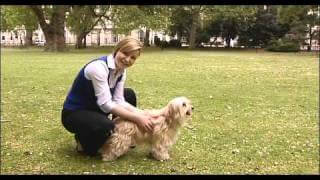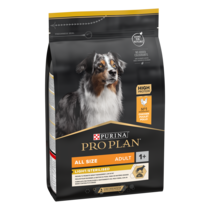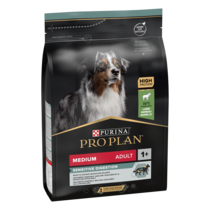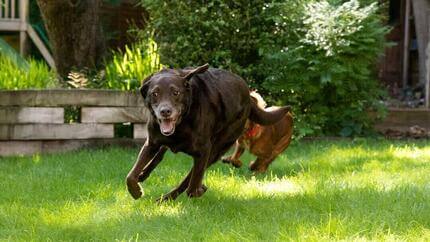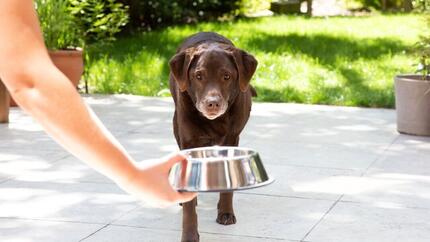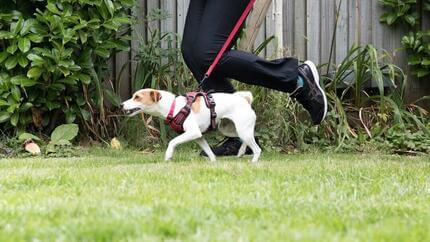
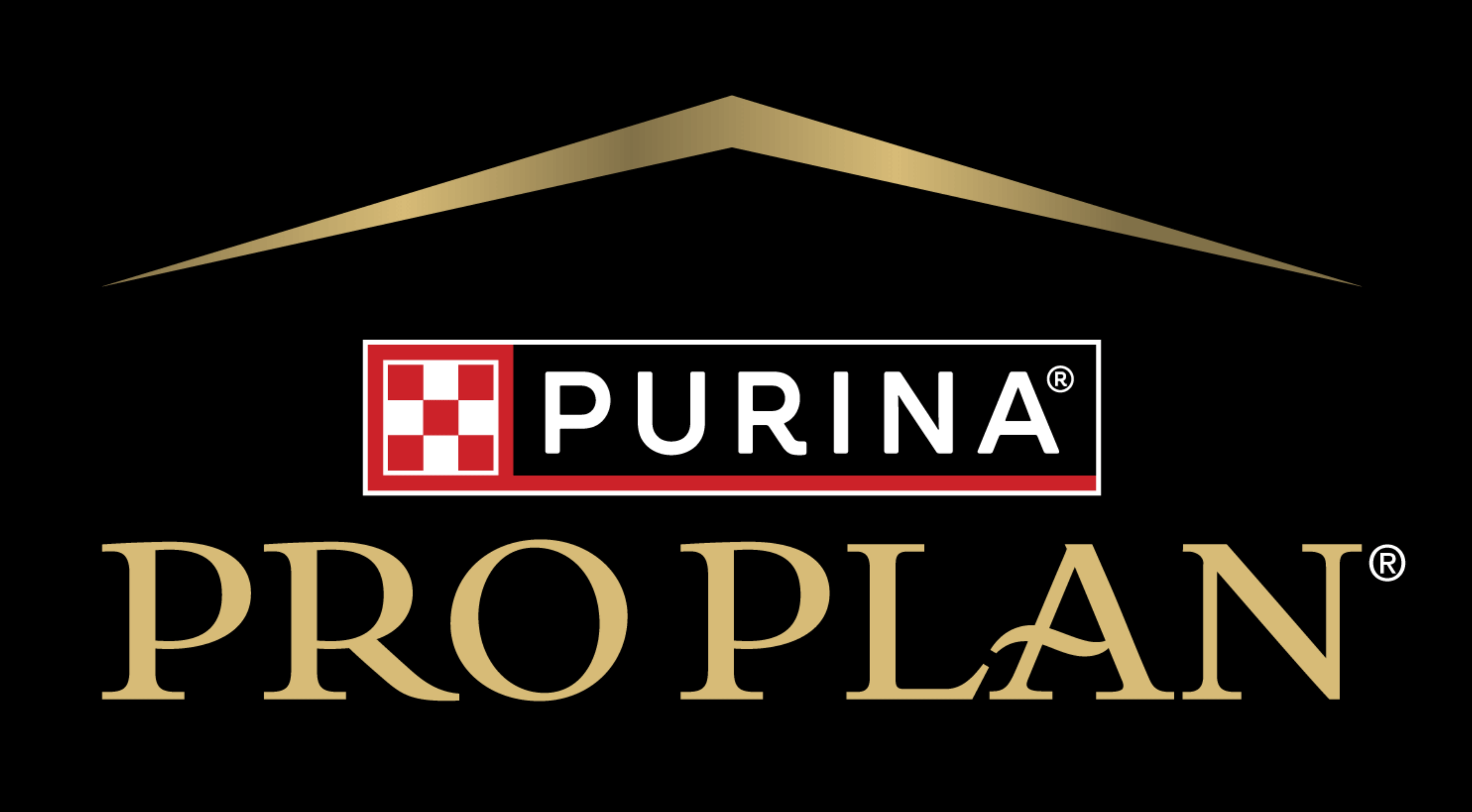
You love your dog just the way they are, so you probably won’t worry too much if they seem to put on just a few extra pounds. But from a health point of view, size really does matter!
Although weighing your dog and monitoring their weight regularly is a good idea, this can be tricky as there is a lot of variation between breeds and it’s not always easy to know what is right for your pet. That’s where dog body condition scoring can make things easier.
What is dog body condition score?
Dog body condition scoring allows you to assess the amount of fat your dog is carrying, it is easy to do at home without scales, and can identify problems in overweight dogs before the scales show a big change. What’s more, the scale applies to nearly every kind of dog, so you can easily check them between visits to the vet whether they’re big, small, wiry or extremely furry!
Why is dog body condition score important?
Owning a dog means keeping a close eye on your dog’s body score and working to maintain an 'ideal' score of four or five throughout all stages of your dog's life. This can also decrease the risk of health problems associated with owning an overweight dog. These include arthritis, heart disease and even diabetes, which not only mean large vet bills but an unhappy, uncomfortable dog – more reason than ever to get them in shape!
Like people, each one processes their food in a slightly different way, particularly depending on their age and activity level. If your dog gets more calories than they need, those excess calories may be stored as fat, which in the worst case can lead to obesity in dogs.
"Learning how to perform a body condition score for your pet, and regularly assessing this in combination with appropriate nutrition and exercise, will ensure you're doing your best for your pet's health and wellbeing", says Zara Boland, Purina's vet.
Some specific problems that puppies can develop from excess weight include:
- Arthritis, joint damage and joint pain.
- Type 2 diabetes.
- Heart disease.
- Reduced exercise endurance and stamina.
- Increased anaesthetic and surgical risks.
- Reduced liver function due to a fatty liver.
How is a dog’s body condition score measured?
Body condition scoring for your dog is really simple if you follow some easy steps. It uses a scale of one to nine, with one meaning ‘very underweight’ and nine meaning ‘very overweight’.
A dog body condition score between four and five is considered ideal – not too big and not too small, which is where you should aim to get your dog. To work out your dog's current body condition score, there are three areas you should check.
1 Rib Check:
Get your dog comfortable and run both of your palms across their ribcage, one hand on either side (your dog will probably think they’re enjoying a nice stroke!) Simply note how it feels and compare it to the chart.
2 Profile Check:
View your standing dog from a side-on angle. It’s best if you are level with your pet so you get the most accurate view.
3 Overhead Check:
Look down at your standing dog from an overhead angle.
Purina dog body condition score tool
Many people are unsure exactly what a healthy weight for a dog is, so how can you know if your pet is the right size for their breed and type? To check your dog’s body condition score and ideal size, just follow these simple steps. You can even print off a copy and stick it to your fridge for permanent reference. Easy!
Using the accordions below, select the image that most closely matches your dog, and we’ll tell you whether they may be underweight, overweight, or just right.
Purina Body Condition Tool
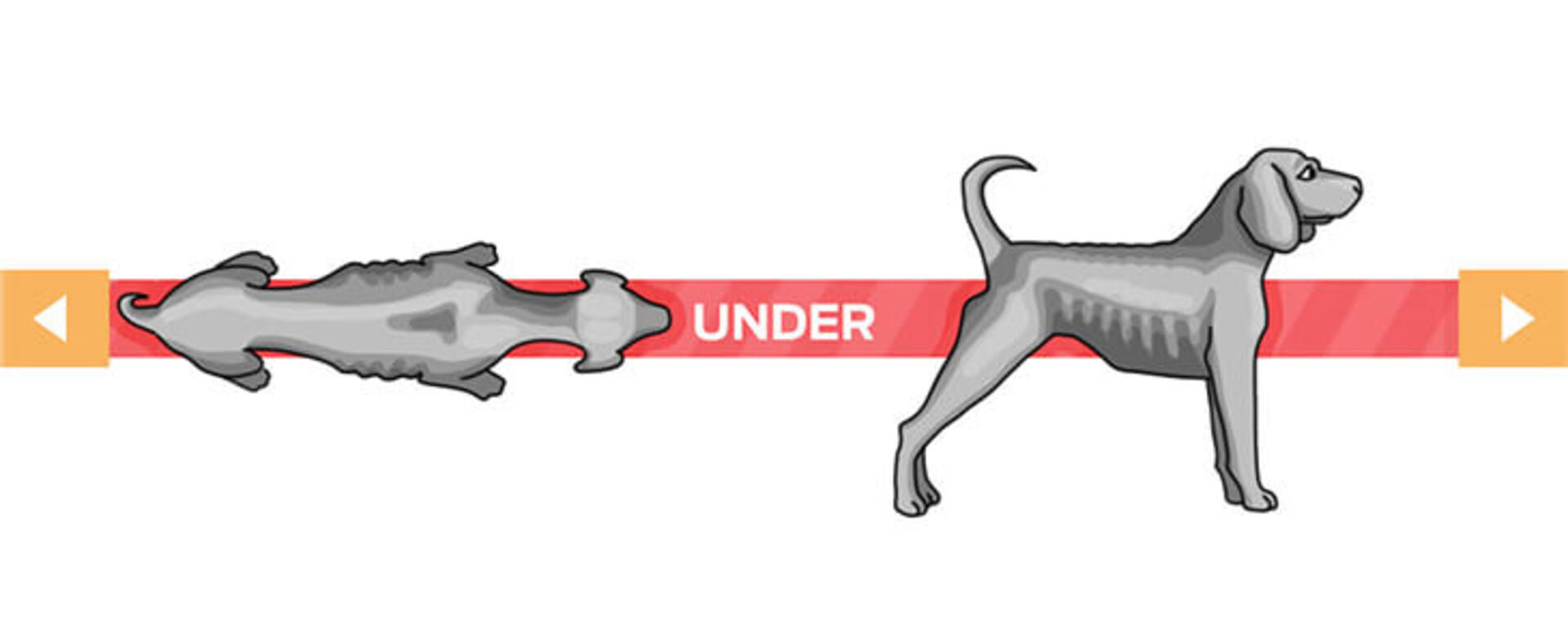
Your dog's condition
Severely Underweight
- Ribs, backbone and hip bones all highly visible1 with complete absence of any fat.
- Severely exaggerated waistline.
- Tummy non-existent.
Very Thin
- Ribs and backbone easily seen with no overlying fat layer.
- Exaggerated waistline.
- Severe tummy tuck.
- When view from above.
- When viewed from the side. If your dog is not in ideal body condition, we recommend you seek veterinary advice to ensure there is not underlying medical cause for weight loss or gain.
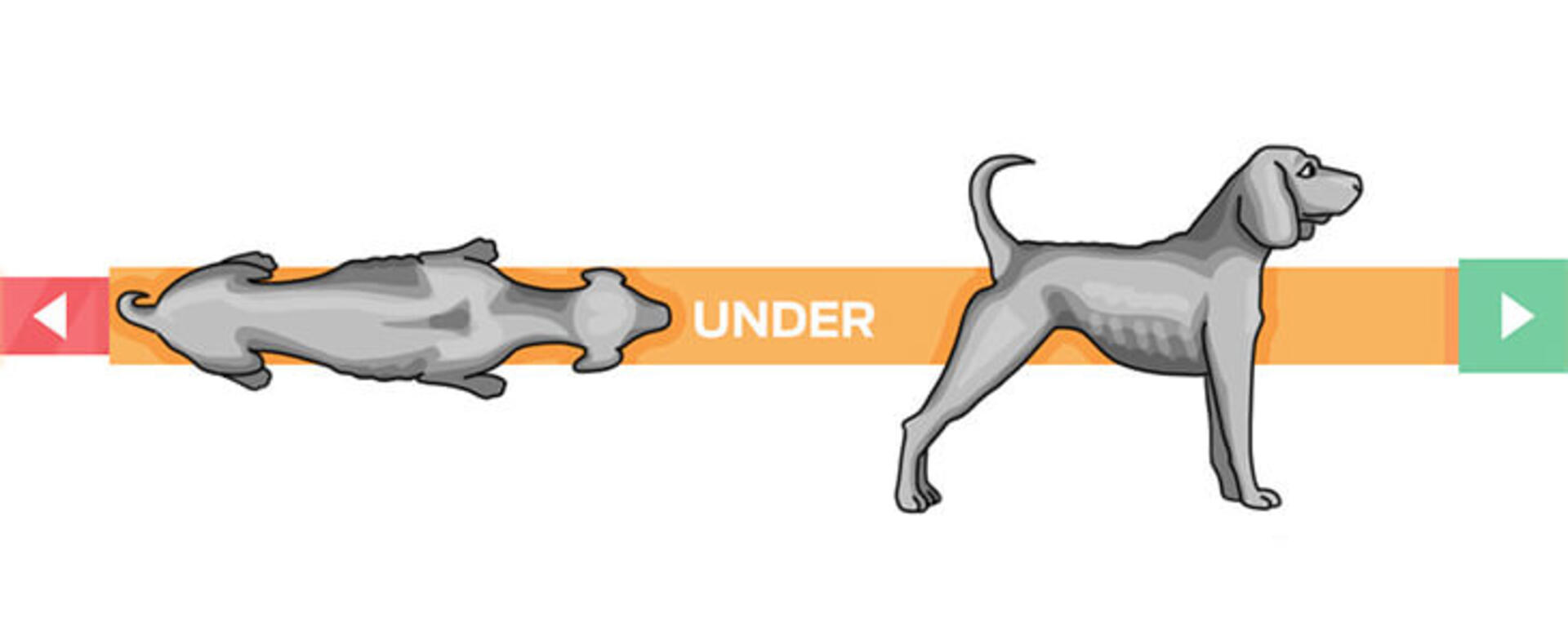
Your dog's condition
Thin
- Ribs, backbone and hip bones easily seen1; with no overlying fat layer
- Some mid muscle loss particularly noticeable around shoulders and thighs
- Exaggerated waistline
- Severe tummy tuck3
Slightly Underweight
- Ribs can be easily felt and may be seen, with backbone and hip bones just visible and no overlying fat layer
- Obvious waistline
- Marked tummy tuck
- 1. In short haired dogs.
- 2. When viewed from above.
- 3. When viewed from the side.
- The Body Condition System was developed at the Nestle Purina Petcare Center and has been validated in the following publications Kealy RD.2002. JAVMA vol.220, p.1315-1320. Laflamme DP. Canine Practise Jul/Aug 1997; 22:10-15. MawbyD, Bartages JW, Moyers T et al. Compendium 2001; 23[9A]:70.
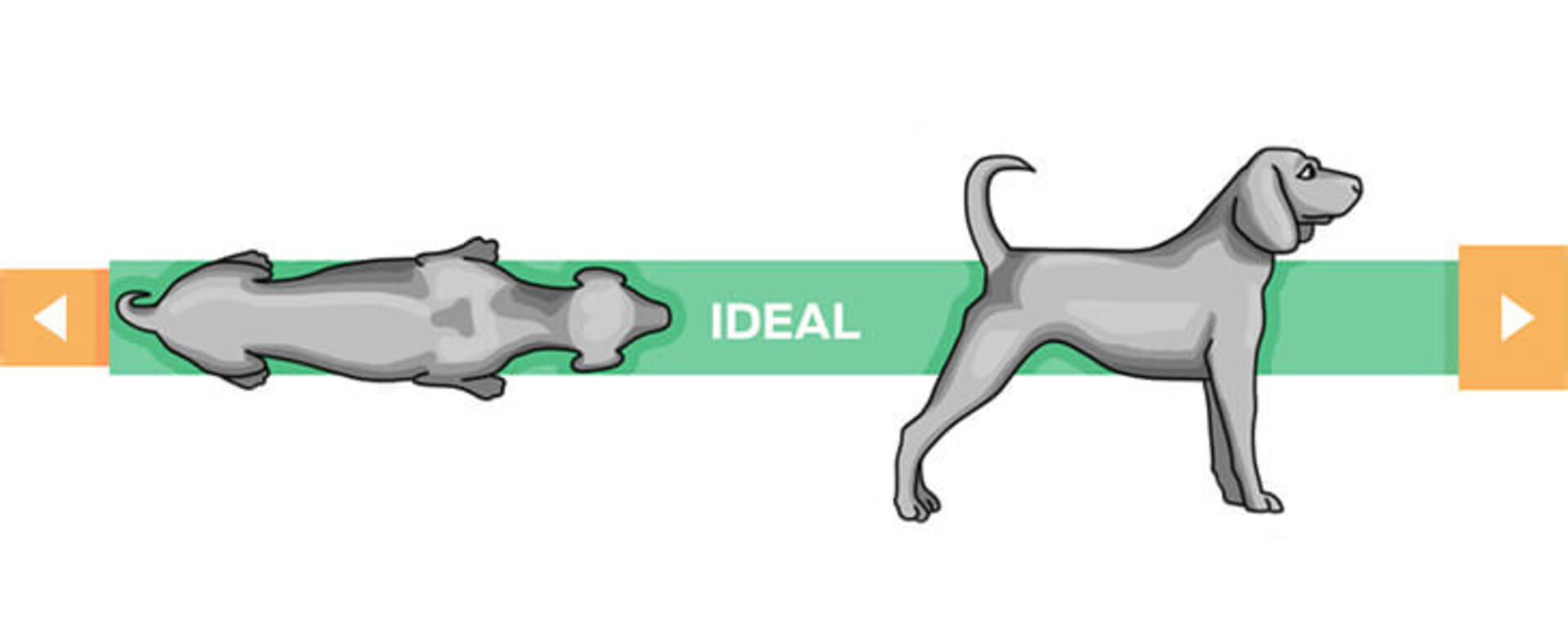
Your dog's condition
Ideal Weight
- Ribs can be easily felt and may/may not be seen1 with minimal layer of overlying fat
- A clear waistline can easily be seen
- Noticeable tummy tuck
- 1. In short haired dogs.
- 2. When viewed from above.
- 3. When viewed from the side.
- The Body Condition System was developed at the Nestle Purina Petcare Center and has been validated in the following publications Kealy RD.2002. JAVMA vol.220, p.1315-1320. Laflamme DP. Canine Practise Jul/Aug 1997; 22:10-15. MawbyD, Bartages JW, Moyers T et al. Compendium 2001; 23[9A]:70.
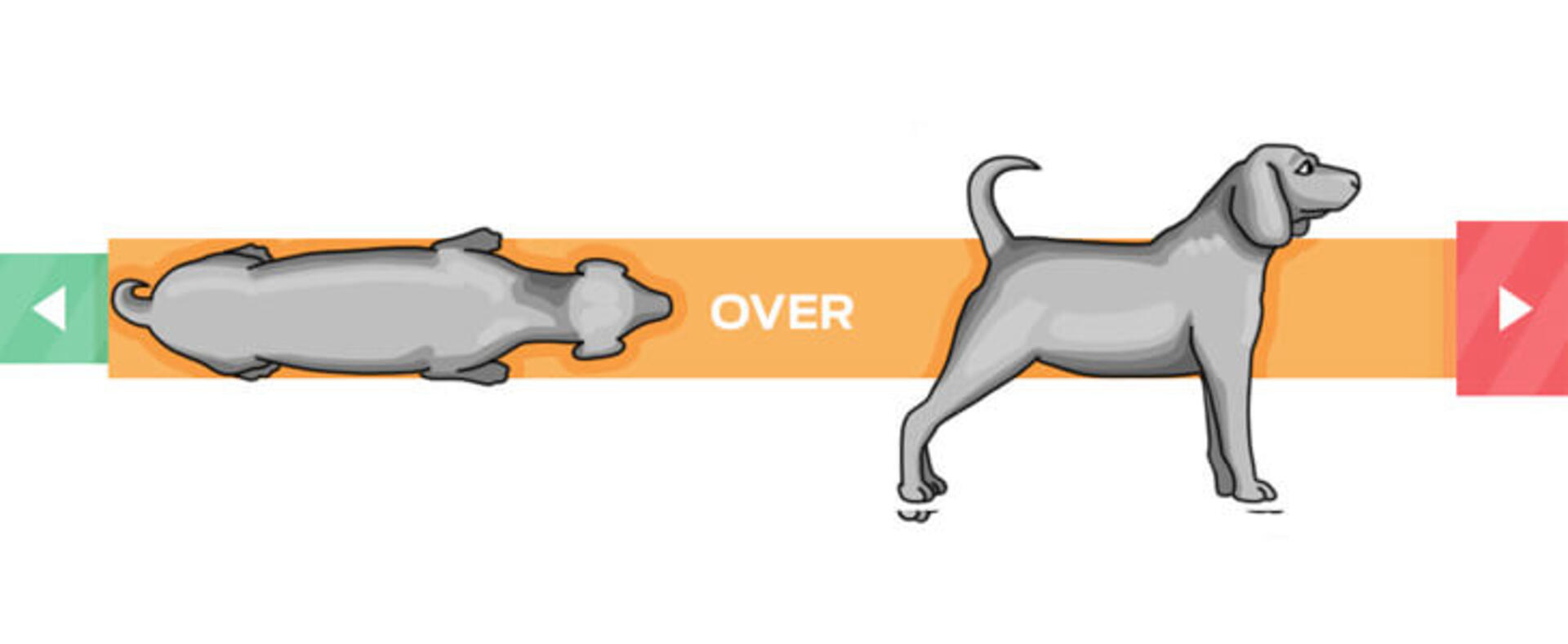
Your dog's condition
Slightly Overweight
- Ribs can be felt, but generally can't be seen, with a obvious layer of overlaying fat
- Waistline is visible, but not clear
- Tummy tucks slightly upwards towards back legs
Markedly Overweight
- Ribs are hard to feel and see under a thickened layer of overlying fat
- Distinct pads of fat can be felt along the lower back and at the base of the tail
- Waistline absent or difficult to see
- 1. In short haired dogs.
- 2. When viewed from above.
- 3. When viewed from the side.
- The Body Condition System was developed at the Nestle Purina Petcare Center and has been validated in the following publications Kealy RD.2002. JAVMA vol.220, p.1315-1320. Laflamme DP. Canine Practise Jul/Aug 1997; 22:10-15. MawbyD, Bartages JW, Moyers T et al. Compendium 2001; 23[9A]:70.
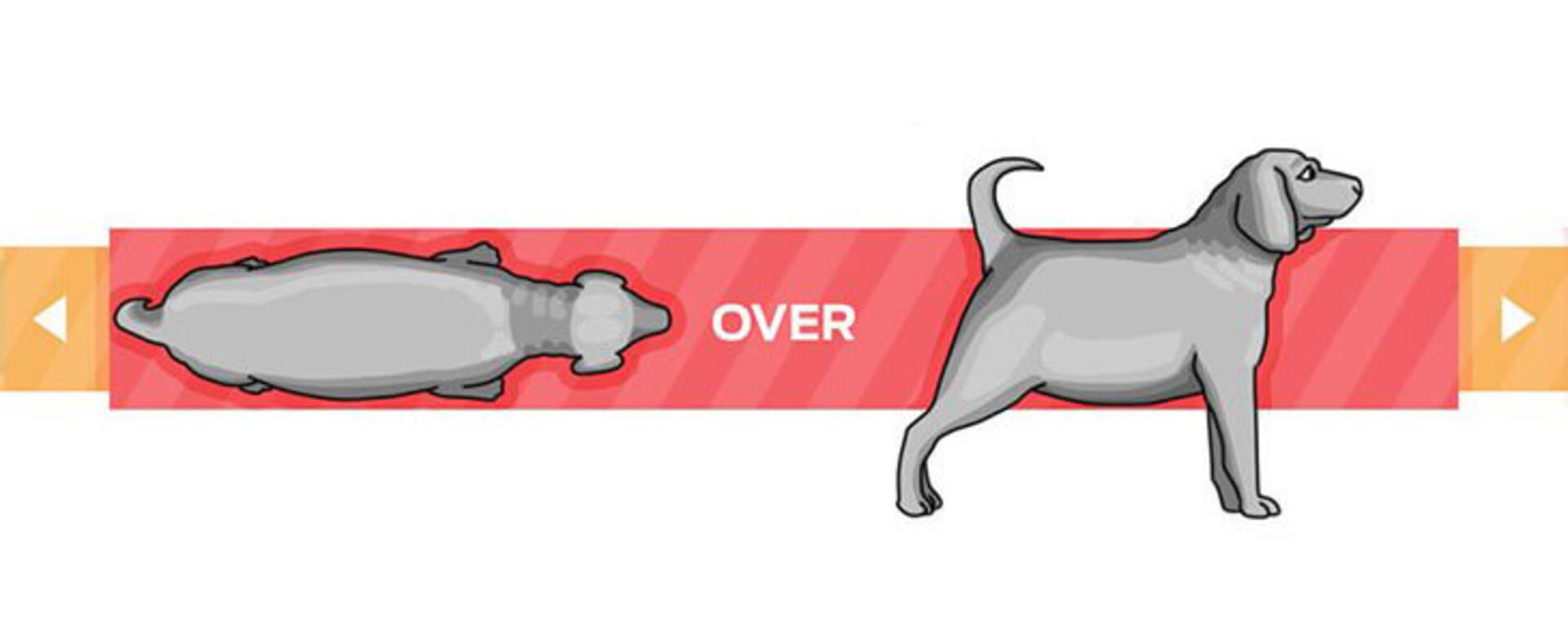
Your dog's condition
Obese
- Ribs are very difficult to feel under a very thick layer of overlying fat
- Chunky pads of fat can be felt along the back and at the base of the tail
- Waistline is absent
- Tummy bulges outwards and may sag downwards3
Clinically Obese
- Ribs are impossible to feel with a marked layer of very thick overlying fat
- Very chunky pads of fat can be felt along the back and at the tail, as well as around the neck and legs
- Waistline is absent
- Tummy distinctly bulges outwards and sags noticeably downwards3
- 1. In short haired dogs.
- 2. When viewed from above.
- 3. When viewed from the side.
- The Body Condition System was developed at the Nestle Purina Petcare Center and has been validated in the following publications Kealy RD.2002. JAVMA vol.220, p.1315-1320. Laflamme DP. Canine Practise Jul/Aug 1997; 22:10-15. MawbyD, Bartages JW, Moyers T et al. Compendium 2001; 23[9A]:70.
Created by experts in pet care, our Dog Body Condition Tool is designed to help you determine if your dog is a healthy size. We try to avoid putting the emphasis on weight alone, which can be misleading. The dog body condition score tool encourages you to get hands on with your dog, feeling them to really judge their actual size underneath their lovely coat! It also recommends looking at your dog from every angle to get an all-round view before deciding if they are a healthy shape and size. Be patient and gentle – your dog may not be accustomed to being handled in this way, but don’t worry, they’ll soon get used to it.
How to find out your dog’s body condition score?
Your dog is too thin if:
- They have ribs, lumbar vertebrae, pelvic bones and other prominent bones (ones that you can see the shape of) that are visible from a distance. They will have no discernible body fat and an obvious loss of muscle mass.
- Your dog's ribs, lumbar vertebrae and pelvic bones are easily visible. They’ll have no palpable fat, with some prominent bones but only minimal loss of muscle mass.
- You have an underweight dog if their ribs are easily palpated (felt) and may be visible, with no palpable fat covering them. The tops of their lumbar vertebrae are visible, their pelvic bones becoming prominent, and they have a prominent waist.
Your dog’s body score is ideal if:
- You’re able to feel their ribs without too much of fat covering. Their waist should be easily visible from above (look for an hour-glass shape) and their abdomen (the part of their underside just in front of their hind legs) should be tucked up towards their pelvis when viewed from one side.
Your dog is overweight if:
- Their ribs are palpable but with slight excess fat covering. Their waist is discernible viewed from above, but is not prominent and an abdominal tuck is apparent.
- You have an overweight dog if you find it difficult to feel their ribs because a heavy fat cover is in the way. There are noticeable fat deposits over their lumbar area and the base of their tail. Their waist is absent or barely visible and their abdominal tuck may or may not be present.
- Your dog's ribs are not palpable under a very heavy fat cover, or palpable only if you apply significant pressure. There are heavy fat deposits over lumbar area and base of their tail. Their waist is absent, with no abdominal tuck. Obvious abdominal distension may be present (their belly is large and hangs a little).
- They have massive fat deposits over their thorax, spine and the base of their tail. Their waist and abdominal tuck is absent, and they have fat deposits on their neck and limbs. There is obvious abdominal distention (their belly hangs).
Is my puppy overweight?
If your dog is still a puppy, you might find their chubby frame a sign of utter cuteness. But be mindful of those extra rolls of puppy fat as they might also predict a future overweight adult dog. As puppies grow they tend to get slimmer, so you can expect your puppy’s body shape to change as they reach their teenage years and move into adulthood. This is one of the reasons why owners can find it difficult to tell the fluff from the fat in the first 12-18 months of their puppy’s life. This is where the dog body condition tool comes in to help, so pay attention in particular to how palpable their ribs are and whether their waist and abdominal tuck are visible. A tiny belly is usually to be expected with puppies, but don’t hesitate to check with your vet if you think the puppy fat is more stubborn than you expected.
More tips for assessing your dog’s body condition
Need some more help? Purina’s resident vet, Zara Boland, demonstrates how dog owners can measure their dog’s current body condition and assess your dog’s body score in three easy steps. It only takes a minute to tell whether your dog is underweight, overweight, or just right.
View a short video of Purina's resident vet Zara demonstrating how to check your dog's body condition:
How to body condition score your dog
Interpreting the Dog Body Condition Tool results
The ideal dog body condition score is leaner than you might think. In fact, pet owners tend to dramatically underestimate the weight of their puppies. Each individual dog will require different food, a different feeding quantity and varying levels of exercise. Depending on body shape, size and breed, two puppies could actually weigh the same but one could be overweight and one underweight.
After you have determined your dog’s body condition score, it’s time to think about what action needs to be taken as a responsible dog owner. If your dog is over- or underweight, ask your vet for advice on getting them back into shape.
Once your dog is where they should be, life will be even more exciting than ever for them – and they’ll have so much more energy, fun and enthusiasm to share with you!
Find even more useful information in our guides for feeding your dog and what you need to know for the first trip to the vet. Or why not check the rest of our dog health in-depth articles to discover more helpful tips.
Shop dog food for weight management:
Related articles


